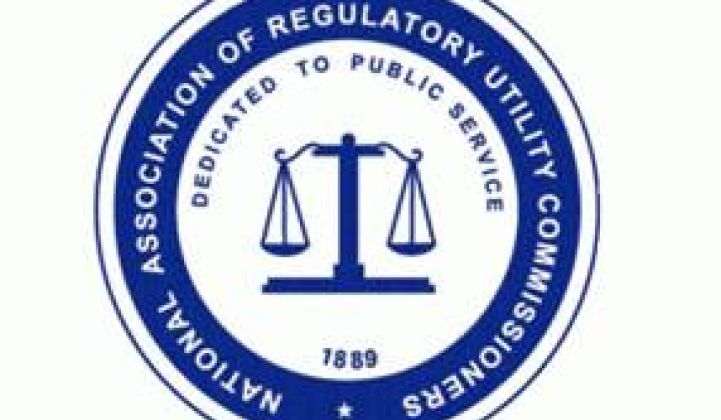"The Myth of Carbon Pollution," a talk from Princeton University physics professor William Happer, went virtually unchallenged by the 200 U.S. utility regulators and others in the session at the National Association of Regulatory Utility Commissioner (NARUC) summer meeting.
A distinguished physicist, Professor Happer has published only one paper on climate science, and it was not peer-reviewed.
Here are six flaws in Professor Happer’s reasoning in the talk:
1. Professor Happer opened by contending that carbon dioxide (CO2) is a benign gas: Humans breathe it out, plants need it to grow, and so on. However, these things are irrelevant to how CO2 acts to enhance the greenhouse effect and drive climate change.
2. “Does the fact that CO2 does not directly affect human health mean the EPA ruling that CO2 is a threat and must be regulated was incorrect?” a commissioner asked. Happer responded that CO2 indeed is not a harmful gas. The EPA’s finding that CO2 is harmful to humans was not made because the substance is harmful to breathe. The ruling was upheld by the Supreme Court because CO2 emissions drive climate change and climate change threatens human health.
3. "The globe is not warming,” Happer said. “The whole planet is greening.” He showed maps of globally proliferating plant life and then ridiculed President Obama’s recent linking of climate change and the increased incidence of childhood asthma. In fact, asthma is thought to be associated with the widespread greening that Happer displayed. Even children living in inner-city neighborhoods seem to be affected, due to increased pollen levels from proliferating freeway greenery.
4. "If CO2 is constant, will the climate stop changing? No,” Happer said. “What is the optimum level of CO2? Who knows? It is never discussed.” If CO2 is held constant, the climate will likely continue to respond to the impacts of atmospheric levels not seen since before the Industrial Revolution. If it were to dissipate back to pre-1700s levels, the climate would continue to change in less consistent patterns, uninfluenced by human factors. Since the 2008 campaign, the president has said he wants to cut CO2 to 17 percent below the 2005 level by 2020.
5. “Models predict 0.3 degrees centigrade warming for the last fifteen years, but there has been no warming, and the models get more wrong every year,” Happer said. He displayed graphs showing a slight cooling trend in that period, but none went further back than the 1970s. Scientists call this kind of selective use of data "cherry-picking." Climate fluctuates, but the trend has been upward for hundreds of years and decisively upward since human population started gaining critical mass.
6. “There has always been extreme weather,” Happer told the utility regulators. He validated the claim with a quote from Shakespeare’s Macbeth describing extreme weather. There is no change in the number of tornadoes, snow, or hurricanes, he said. Only insurance claims have gone up, because more people now live in vulnerable places. In fact, 2012 was the hottest year ever in the U.S., precipitation was 2.57 inches below the 20th-century average, it was the fifteenth driest year on record, and extreme weather events are not necessarily more frequent but are more severe, as predicted by climate models.
Asked why more climate scientists don’t refute the myths of carbon pollution and climate change, Happer said there is “a tremendous incentive to conform in university communities. But the people I know who take the trouble to really dig in all come out like me,” by which he presumably meant disagreeing with the broad consensus within the scientific community on climate change.
The regulators listening to his talk will make fateful decisions about the nation’s energy future.



